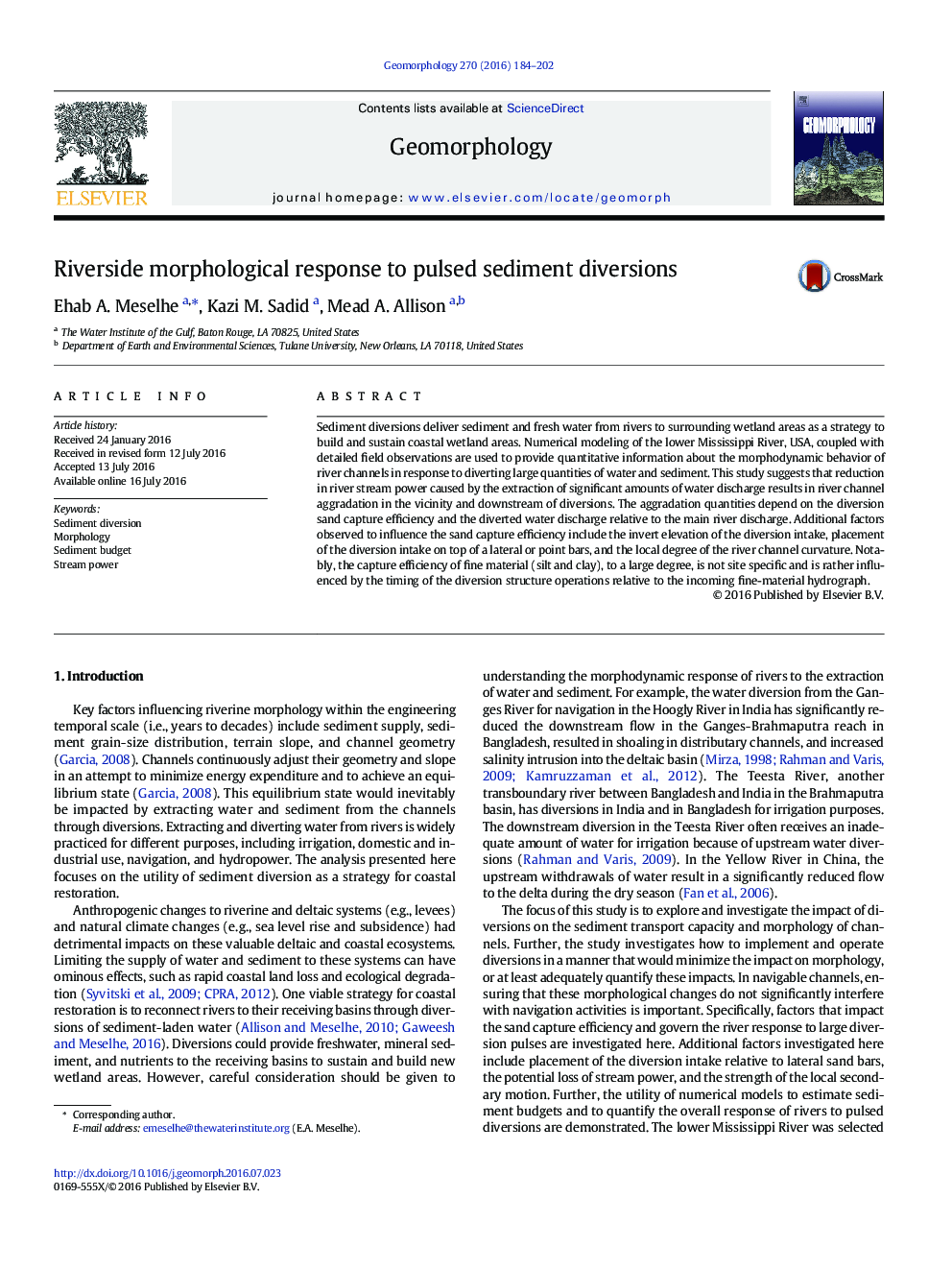| کد مقاله | کد نشریه | سال انتشار | مقاله انگلیسی | نسخه تمام متن |
|---|---|---|---|---|
| 4683903 | 1635379 | 2016 | 19 صفحه PDF | دانلود رایگان |
Sediment diversions deliver sediment and fresh water from rivers to surrounding wetland areas as a strategy to build and sustain coastal wetland areas. Numerical modeling of the lower Mississippi River, USA, coupled with detailed field observations are used to provide quantitative information about the morphodynamic behavior of river channels in response to diverting large quantities of water and sediment. This study suggests that reduction in river stream power caused by the extraction of significant amounts of water discharge results in river channel aggradation in the vicinity and downstream of diversions. The aggradation quantities depend on the diversion sand capture efficiency and the diverted water discharge relative to the main river discharge. Additional factors observed to influence the sand capture efficiency include the invert elevation of the diversion intake, placement of the diversion intake on top of a lateral or point bars, and the local degree of the river channel curvature. Notably, the capture efficiency of fine material (silt and clay), to a large degree, is not site specific and is rather influenced by the timing of the diversion structure operations relative to the incoming fine-material hydrograph.
Journal: Geomorphology - Volume 270, 1 October 2016, Pages 184–202
